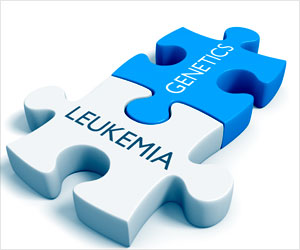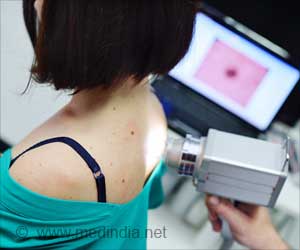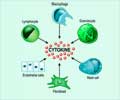Children who are bound to develop Acute Lymphoblastic Leukemia (ALL) tend to react to infections differently, i.e., right from when they were infants.

‘Children who later developed B-cell precursor ALL were found to have had statistically significantly different neonatal concentrations of eight of the nine analyzed inflammatory markers, compared with the normal control group.
’





How the Study Was Conducted: Søegaard and colleagues used data from Denmark's Neonatal Screening Biobank and nationwide registers to assess baseline characteristics of the immune system of children born in Denmark from 1995 to 2008, who at ages 1-9 years were diagnosed with B-cell precursor ALL, the most common ALL subtype in children. They measured the concentrations of inflammatory markers, including cytokines and acute inflammatory proteins, on neonatal dried blood spots from 178 childhood ALL patients and 178 matched leukemia-free controls.Inflammatory markers included interleukin (IL)-6, its soluble receptor sIL-6Rα, IL-8, IL-10, IL-12, IL-17, IL-18, transforming growth factor (TGF)-β1, monocyte chemotactic protein (MCP)-1, and C-reactive protein (CRP). "These markers were chosen to provide a broad picture of the neonatal immune response," Søegaard said.
Results: Children who later developed B-cell precursor ALL had statistically significantly different neonatal concentrations of eight of the nine analyzed inflammatory markers, compared with controls. IL-10 concentrations were too low for accurate measurement. Neonatal concentrations of sIL-6Rα, IL-8, TGF-β1, MCP-1, and CRP were statistically significantly lower, while concentrations of IL-6, IL-17, and IL-18 were statistically significantly higher among B-cell precursor ALL patients, compared with controls.
"We also demonstrated that several previously shown ALL risk factors, namely birth order, gestational age, and sex were associated with the neonatal concentrations of inflammatory markers," Søegaard noted. "These findings raise the interesting possibility that the effects of some known ALL risk factors partly act through prenatal programming of immune function.
Author's Comments: "Our findings suggest that children who develop ALL are immunologically disparate already at birth," said Søegaard. "This may link to other observations suggesting that children who develop ALL respond differently to infections in early childhood, potentially promoting subsequent genetic events required for transformation to ALL, or speculations that they are unable to eliminate preleukemic cells.
Advertisement
"Our findings underline the role the child's baseline immune characteristics may play in the development of ALL. However, we cannot yet use our research results to predict who will develop childhood ALL. In future studies, we will further characterize the relation between immune constitution at birth and risk of childhood ALL with the ultimate goal of developing preventive strategies targeting predisposed children," Søegaard said.
Advertisement
Source-Eurekalert













